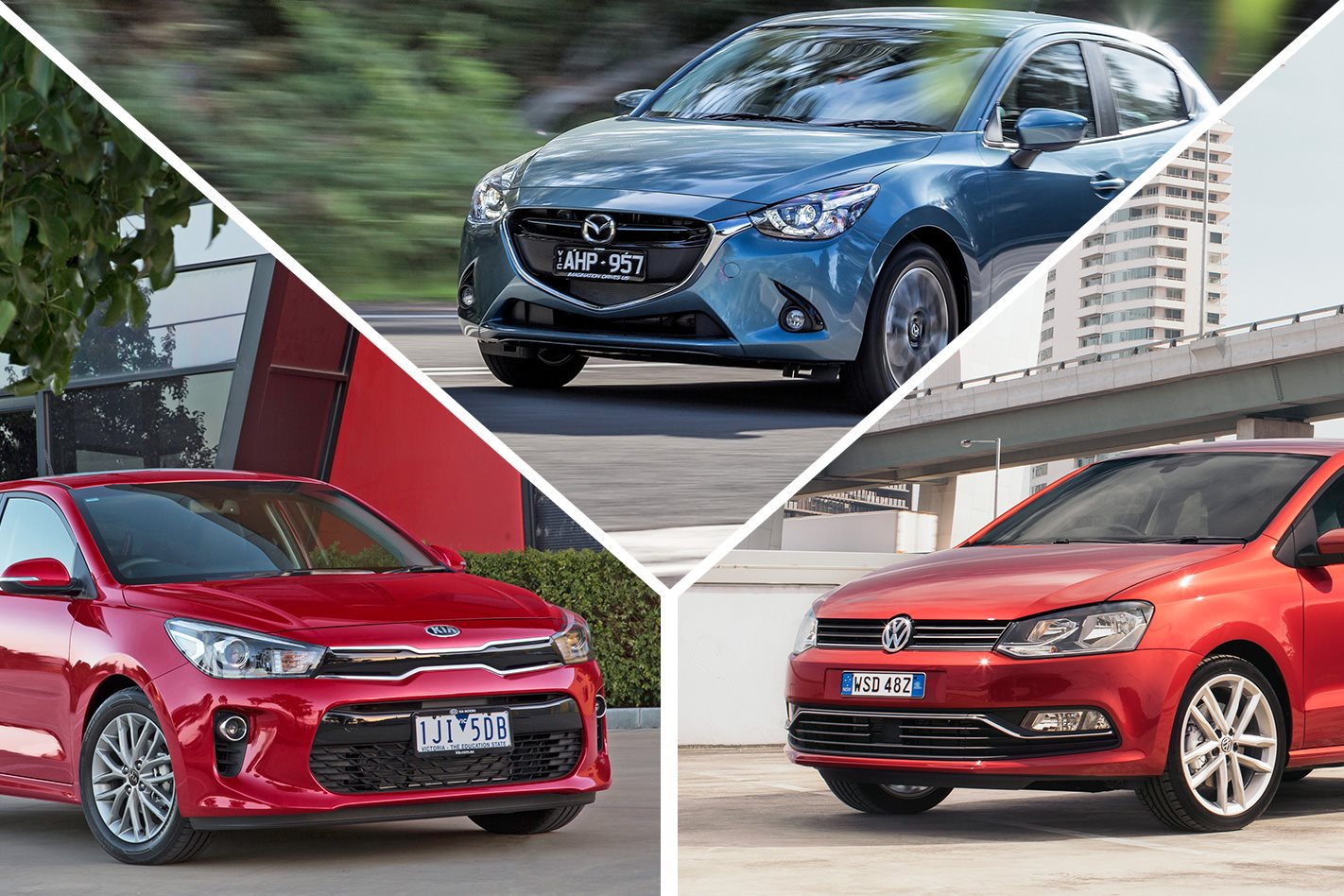
With small cars getting bigger, the light- or city-car segment is becoming more popular with many buyers still seeking something that’s nimble and fuel efficient. The Mazda 2 and Volkswagen Polo are considered two of the better quality cars in their class and now they have a strong competitor in the form of the fourth-generation Kia Rio which has just been released in Australia.
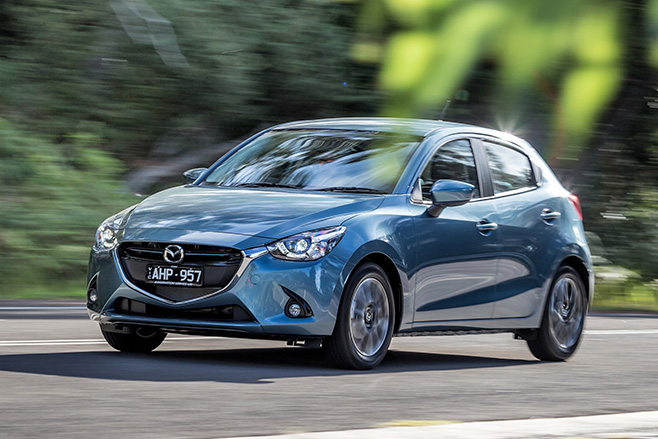
PRICE AND EQUIPMENT | WINNER: KIA RIO
Price ranges for all three vehicles are similar with the Rio priced from $16,990 – $22,990, the Mazda 2 $14,990–$22,690 and the Volkswagen Polo ranging between $16,990 and $29,990.
The Rio wins at the lower end with decent standard equipment for a light car including upmarket-cabin build and standard features including a 7.0-inch ‘floating’ central touchscreen, reverse parking sensors, reversing camera, keyless entry, automatic headlights, engine idle start/stop and Apple CarPlay/Android Auto capability.
The Polo comes very close for the same base price with impressive cabin quality, a reversing camera; 6.5-inch colour touchscreen to control info media functions such as Apple CarPlay and Android Auto, engine idle start/stop and daytime running lights.
The base-model Mazda 2 Neo costs $2000 less than the other two and lacks the touch screen and reverse camera, thought you’ll get similar features in the mid-range Maxx, which starts at $17,900, including 7-inch floating touch screen, reverse camera and engine idle stop/start.
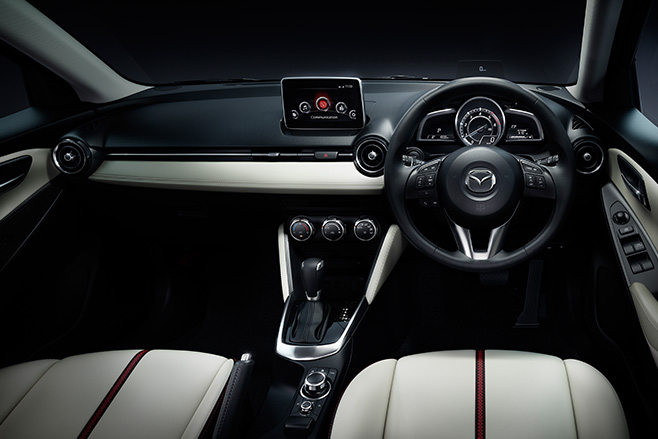
INTERIOR AND VERSATILITY | WINNER: KIA RIO
The interior design in all three cars is superior to most of their competitors.
The all-new Kia Rio’s interior design and quality is considerably improved over the previous model with a more-upmarket cabin that imparts a distinct European feel with greater use of horizontal lines to create a sense of improved space. It’s also bigger than the previous model resulting in a spacious cabin with improved leg and shoulder room in both rows and ample headroom – even for six-foot adults in the back. It also has a class-leading 325-litre boot space.
The Mazda 2’s interior is well put together and adds maturity found in few other cars of this size or price. Cloth-trimmed front seats provide good support and the driving position is comfortable. The rear pew offers good shoulder and leg room for two, and a comfortable cushion. The rising window line and large front headrests limit vision, which might be a factor for children. The hatchback’s boot capacity is 250-litres.
The Polo’s interior is well put together, and provides something for Kia to aspire to. It’s a little drab in the entry level 66TSI Trendline compared to the 81TSi Comfortline and GTI models which have brighter metal finishes. The front seats are comfortable and provide good body support through corners. The rear seats are pretty tight for leg room, but there’s good headroom and the low window line means passengers can enjoy the view. Boot space is just 280-litres, but there’s a split floor that offers flexibility.
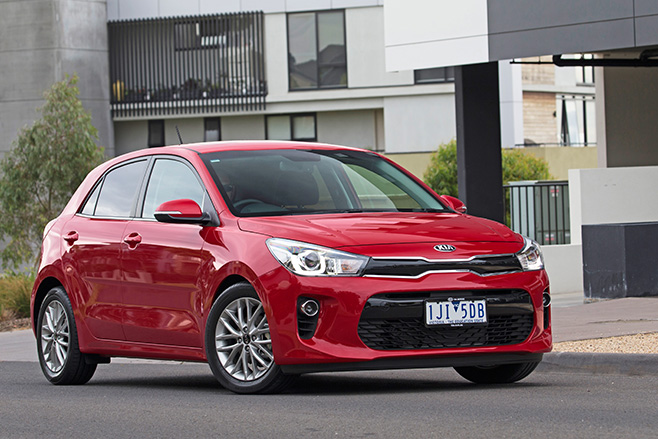
PERFORMANCE AND ECONOMY | WINNER: VOLSWAGEN POLO
The Mazda 2 and Volkswagen Polo are both fun cars to drive, offering decent grunt and fuel efficiency but the VW wins on points thanks to its turbocharged fours that provide greater response and choice.
The 1.2-litre four-cylinder turbo engines in the Polo 66TSI and 81TSI are the most fuel-efficient, both consuming about 4.8 litres/100km in the official test (urban and country combined). The engines names reflect their output – the 66TSI’s 66kW motor isn’t too powerful, but it’s pretty responsive particularly for everyday driving. The 88TSI naturally has more oomph.
The 141kW 1.8-litre petrol turbo engine in the GTI provides plenty of punch and a nice throaty sound. Its manual gearbox feels light and easy to operate, while the seven-speed auto is very smooth and quick in its shifts once moving. The GTI’s combined fuel efficiency is 6.1L/100km for the manual and just 5.7L/100 with the optional 7-speed auto.
The 66TSI comes standard with a five-speed manual gearbox, whereas the 81TSI and GTI get a six-speed manual. All can be optioned with a seven-speed twin-clutch automatic, which has two computer controlled clutches but operates much like a traditional automatic. The six-speed auto gearbox in all variants can be clunky in stop-start traffic.
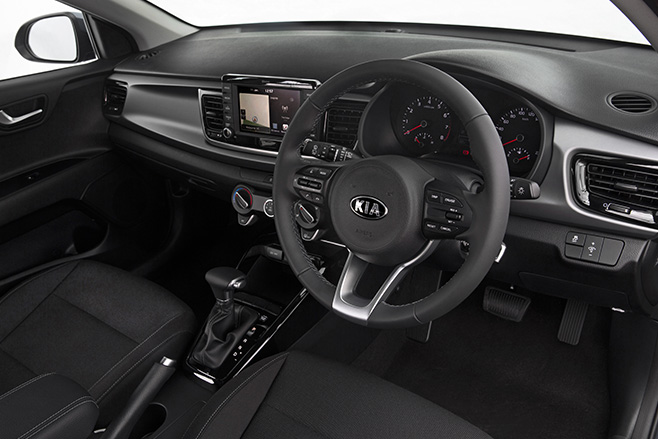
The Mazda’s 1.5-litre, four-cylinder, SKYACTIV-Drive petrol engine is more than enough and it is quite economical – 4.9L/100km with auto and 5.4L/100km with manual – despite revving well beyond 2000rpm at 100km/h in sixth gear. The short-shifting manual gearbox makes for enjoyable driving while the automatic goes through the gears decisively. It even has a throaty, sports-car-like exhaust note.
The Kia Rio’s drivetrain is its one big letdown, with a 74kW/133Nm 1.4-litre four-cylinder petrol carried over virtually unchanged that feels underpowered and uninspiring. The four-speed auto also feels antiquated. It’s not a huge issue in town, but on the open road, hills and overtaking can be problematic. Switching to the six-speed manual improves things – greater access to the torque that is there, though this option is only available in the entry-level S model.
RIDE AND REFINEMENT | WINNER: VOLKSWAGEN POLO
Like the previous model, the new Rio has undergone an extensive local suspension tune to improve the comfort of its ride on Australian roads. Handling is tidy, with enough grip and poise to keep a keen driver interested. The Rio’s chassis now feels solid and more rigid and its ride is a highlight. Noise suppression is also vastly improved.
The Mazda 2 also has excellent ride comfort for a light car, with occupants well protected from bumpy surfaces but not quite up there with the Polo. It’s also pretty noisy, particularly on course bitumen.
The Polo feels stable but agile and provides a smooth ride which recovers quickly over bumps. The suspension is noticeably harder in the GTI because of its sports tune, but not too uncomfortable. Where many cars of this size sound noisy and feel tinny, the Polo is surprisingly quiet.
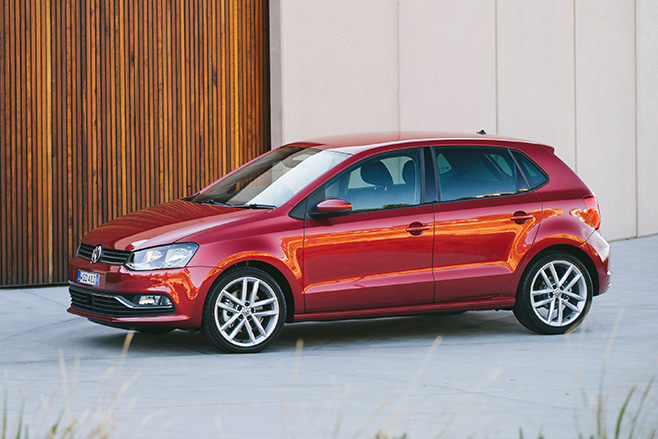
STEERING AND HANDLING | WINNER: VOLKSWAGEN POLO
The Rio’s chassis now feels solid and more rigid and its ride is a highlight. Steering is fluid and accurate though could use some more feel.
The Mazda 2 feels like a bigger car thanks to the chassis being a revised version of the Mazda 3’s underpinnings. It inspires confidence and is fun to thread along a favourite country road. Responsiveness and feedback from the smooth steering increase as you turn the wheel further into a corner.
But again the Polo shines through. All variants are a joy to drive with excellent car suspension that loves bends and feels like you’re driving something far more expensive. Its brakes also feel strong and responsive compared to other cars in its class. The Polo GTI is a genuine hot hatch, with excellent acceleration with 17-inch tyres that provide excellent grip.
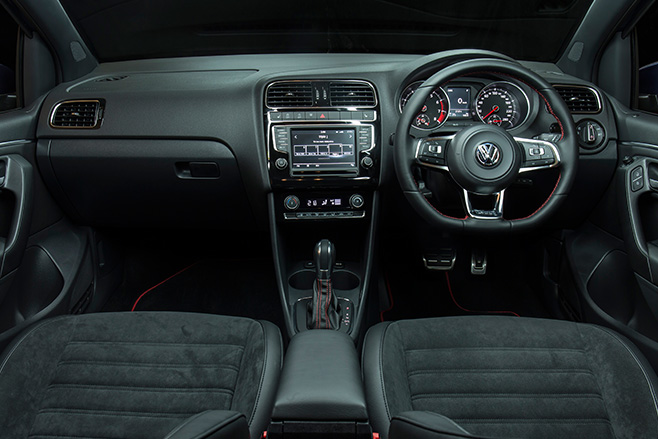
VERDICT | WINNER: VOLKSWAGEN POLO
The new Kia Rio is a much better car than its predecessor and has dramatically closed the gap between Korean light cars and their European counterparts in terms of quality and refinement. But it’s not quite there, mostly because of the lacklustre powerplant, which will be rectified in a GT version that is expected to have a gutsy 1.0-litre three cylinder turbo engine.
The Mazda 2 didn’t win any of the categories but its right up there as an excellent light car and preferable to more expensive vehicles in the small car category. It too rivals the Polo in terms of performance, ride and handling but the German’s turbo engines, underpinning and overall finish give it the edge.



